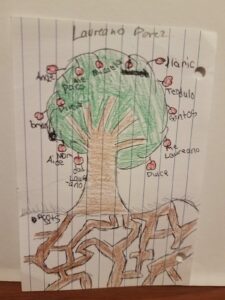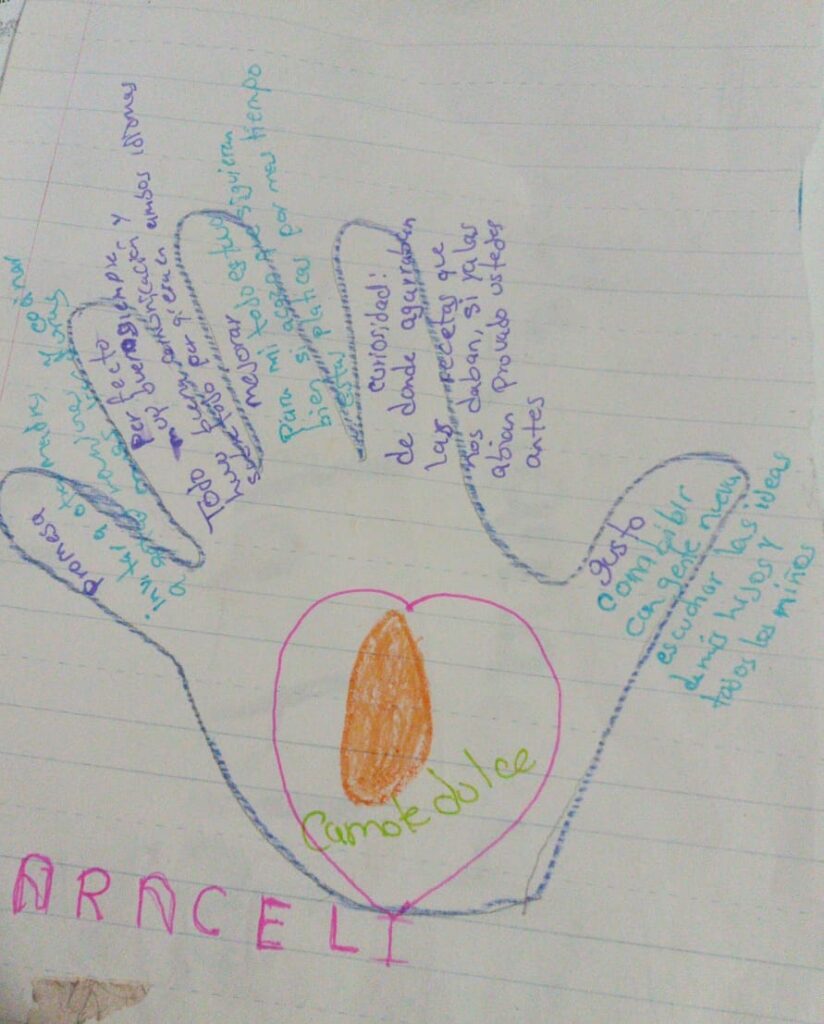By Lana Alman, Culinary Educator
Having the opportunity to work with Community Food Action as this season’s Farmers Market for Kids Culinary Educator gave me a great sense of hope and inspiration, especially in these difficult times when people crave human interaction. Starting in August, we embarked on a 16–week journey of zooms, culinary experiments, funny camera angels, and most importantly, community building. In these four months, in addition to teaching about seasonal eating and healthy cooking, we travelled around the globe, heard family stories, and created connections beyond the screen.
Transitioning in-person culinary education sessions to a virtual format presented us with numerous challenges. Choppy Wi-Fi, connectivity issues, and the mute button threw us curve balls on a weekly basis. Perhaps even a bigger obstacle was that kids weren’t able to touch, taste, or smell the food through the screen. Thanks to technology however we were able to create visually engaging content and incorporate elements of storytelling, games, and interactive activities.
Each week we featured a drawing prompt for kids to share their favorite fruits or vegetables, seeds, or season of the year. Kids loved to put their drawings up to the screen as we spotlighted them on camera. Music from all over the world was incorporated to inspire the drawing.

We often referred to a map of the world to show kids where the ingredients were originally grown and thanked the farmers who cultivate the land today. We pointed to Belgium for Brussels sprouts, Kazakhstan for apples, and Peru for potatoes. Kids were delighted to hear that fruits and vegetables had their own families and travel stories. The group was as diverse as our recipes, with families from Ecuador, Mexico, Guatemala, and the Dominican Republic joining our weekly sessions. Switching between English and Spanish, moms often shared the unique names for how they refer to fruits and vegetables and told us about native recipes that they make at home. From these conversations we learned about bayos, ayocotes, and chilacayotes. These sessions not only gave kids a space to learn, but for the moms to teach us about traditional cuisine from around the region.
During in-person sessions, parents tended to be in more of an observer’s role, whereas during the virtual sessions, they participated in conversations and weekly activities, which wasn’t only an enriching experience for the kids, but also for the adults.
Like family, we celebrated holidays and birthdays on our weekly zoom sessions. We spoke about World Indigenous People’s Day, Native American and Hispanic Heritage Months, and even squeezed National Nut Day in October. And like every community, we incorporated rituals into ours. We began every session by featuring photos of the kids who came to the 170 Farm Stand the day before. And we started each culinary demo by washing our hands, putting on our aprons, and our chef’s hats, and even if it was pretend, the kids loved to play along. Ritual is key to community building, and these small touches gave families a sense of belonging and routine.
From just a few participants during our first week to over a dozen zooms on the gallery view in our final session, these weekly gatherings served as a space for families to connect beyond the screen. As we brought our season to a close, moms expressed a sense of gratitude for the weekly sessions, and a desire to continue in the future. They enjoyed meeting new people, hearing their children’s ideas and spending time together. Creating connection in COVID isn’t easy, but it sure is possible. Incorporating ritual, celebration, and storytelling allowed us to transcend linguistic, cultural, and technological barriers while building community right from our homes.
